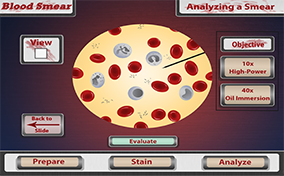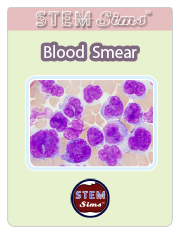What is a red blood cell?
Red blood cells (RBCs) are also called erythrocytes. The function of a RBC is to transport oxygen to various cells throughout the body. RBCs are disc-shaped cells that have slight depressions in the top and bottom sides of the cell. Mature RBCs do not have a nucleus. The red color of RBC is due to the hemoglobin that the cell contains.
What is a normal red blood cell count?
A healthy person typically has a RBC count between 4 X 1012 to 5 X 1012 cells per liter of blood.
What is a white blood cell?
White blood cells (WBCs) are also called leukocytes. Their function is to help with immune system responses. WBCs are usually slightly larger in size than RBCs. WBCs contain a nucleus and their cytoplasm has granules of different sizes and color.
What is a normal white blood cell count?
A healthy person typically has a WBC count between 5 X 109 to 1 X 1010 cells per liter of blood.
What is a normal red blood cell to white blood cell ratio?
Although the RBC/WBC ratio can vary drastically in a healthy individual, from about 200:1 to 2,000:1, a ratio around 700:1 is considered most typical. A suppressed immune system could result in a much higher ratio, while anemia or body infections could demonstrate a much lower ratio.
What are the different types of white blood cells?
Basophils – Basophils are the least common white blood cell found in healthy individuals. Only about 1% of leukocytes are basophils. They play a role fighting substances that cause allergies.
Eosinophils – About 3% of white blood cells in a normal person are eosinophils. Eosinophils, like basophils, attack substances associated with allergies.
Lymphocytes – Lymphocytes make antibodies that attack foreign antigens. They also produce very powerful toxins that serve the same purpose as antibodies. Some lymphocytes decrease the activity of a person’s immune system, while others increase the system’s activities. Around 28% of a healthy person’s white blood cells are lymphocytes.
Monocytes – These white blood cells “eat” bacteria and other debris in a cell that has an infection. About 6% of leukocytes are monocytes.
Neutrophils – Neutrophils are the most common type of white blood cell found in normal people, with an occurrence of around 62%. They assume a similar role to monocytes in that they ingest cellular debris and bacteria following the infection of a cell.
What are some common disorders associated with too low or too high blood cell counts?
)
 A patient reports that she’s feeling weak and run-down lately. After taking her vital signs, she does not appear to have a fever, and her blood pressure and pulse rates are normal. A blood test is ordered to further evaluate her condition. It’s up to you to prepare and analyze her blood sample to help with her diagnosis. Are you ready to determine her red and white blood cell counts? Your patient awaits your expertise to prepare, analyze, and evaluate her blood smear.
A patient reports that she’s feeling weak and run-down lately. After taking her vital signs, she does not appear to have a fever, and her blood pressure and pulse rates are normal. A blood test is ordered to further evaluate her condition. It’s up to you to prepare and analyze her blood sample to help with her diagnosis. Are you ready to determine her red and white blood cell counts? Your patient awaits your expertise to prepare, analyze, and evaluate her blood smear.)


